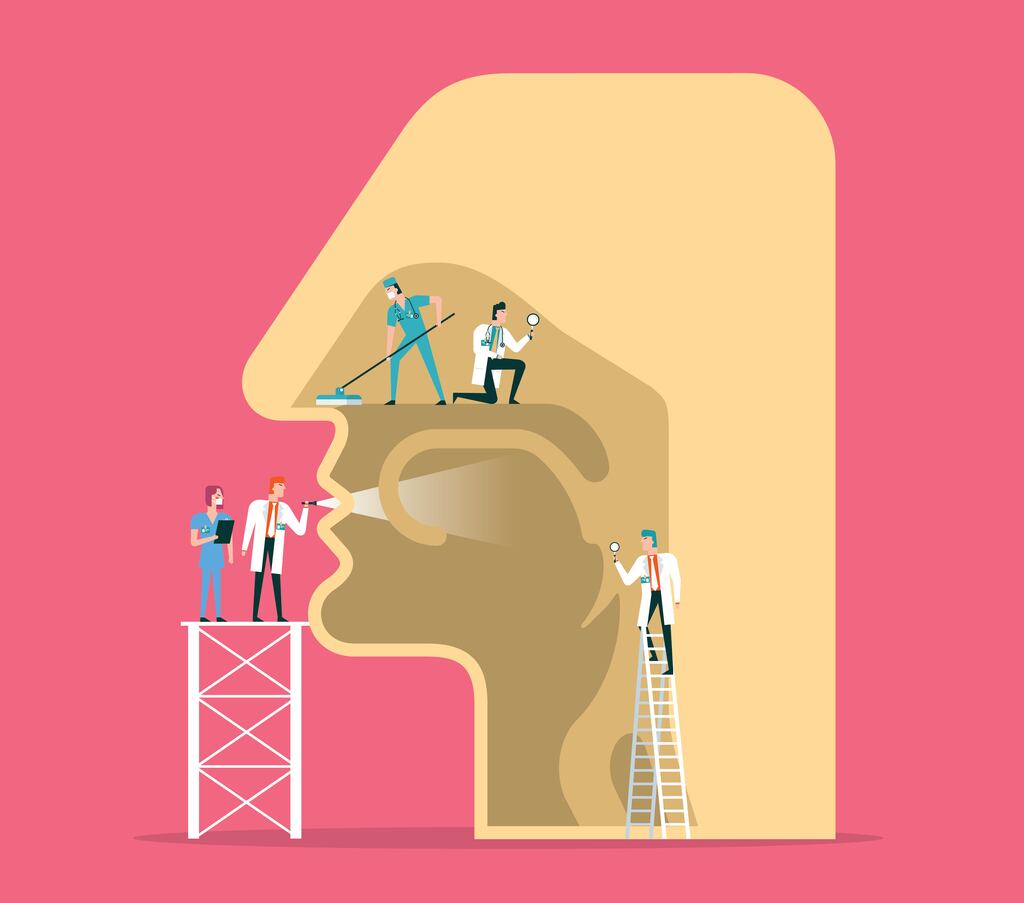
Our voices are not something that readily come to mind when it comes to detecting disease. Most of us have two voice changes in our lifetime: first during puberty, as the vocal cords thicken and the voice box migrates down the throat, and secondly as ageing causes structural changes.
But it is now recognised that, for some of us, there’s another voice shift – a biomarker for when a physical or psychological illness begins. This has led to a major research initiative by the US National Institutes of Health (NIH) – the Voice as a Biomarker of Health project.
According to the website WebMD, over the next four years, the Voice as a Biomarker team will receive nearly $18 million (€16.4 million) in funding to gather a massive amount of voice data. The goal is to collect 20,000 to 30,000 samples, along with health data about each person being studied. Scientists hope they can use the database to develop algorithms linking health conditions to the way we speak.
[ Hello, my name is Dr ChatGPT: Are robot doctors really the future?Opens in new window ]
“We’re learning that there are patterns in voice changes that can indicate a range of conditions, including diseases of the nervous system and mental illnesses,” Dr Yael Bensoussan, director of the University of South Florida’s Health Voice Centre and the co-principal investigator of the NIH project, told WebMD.
From Saipan to John Boorman: 10 events to catch at the 70th Cork International Film Festival
From France to Ireland: ‘I called my parents after two weeks and said I’m not coming back’
John Collison of Stripe: Ireland is going backwards. Here’s how to get it moving
Bláthnaid Ní Chofaigh on the death of her sister Bríd: ‘You’re angry first, then it’s torture’
For the first two years, new data will be collected exclusively via universities and high-volume clinics to control quality and accuracy. Eventually, people will be invited to submit their own voice recordings, creating a crowdsourced dataset. “Google, Alexa, Amazon – they have access to tons of voice data,” says Bensoussan. “But it’s not usable in a clinical way, because they don’t have the health information.”
Artificial intelligence may be better than the human brain at pinpointing the right disease
Bensoussan and her colleagues hope to fill that void with advance voice screening apps, which they say could prove especially valuable in remote communities that lack access to specialists and could be used as a diagnostic tool in telemedicine. Indeed artificial intelligence may be better than the human brain at pinpointing the right disease.
Which health conditions show the most promise for voice analysis? The Voice as a Biomarker project will focus on five categories: voice disorders, neurological conditions, respiratory disorders, psychological disorders and paediatric speech problems.
[ Tech is invading our medical privacy: another reason to beware Dr GoogleOpens in new window ]
Voice disorders, such as cancer of the larynx, cause a “roughness” of voice. Hoarseness that lasts at least two weeks is often one of the earliest signs of laryngeal cancer. Yet it can take months – one study found 16 weeks was the average – for patients to see a doctor after noticing the changes. The aim of the research is to get a patient to speak into a smartphone app, after which an algorithm compares the person’s vocal sample with the voices of laryngeal cancer patients. The app will give the estimated odds of laryngeal cancer in the patient, which will help doctors decide whether a specialist referral is warranted.
Bipolar disorder can make the voice louder and faster during manic periods, then slower and quieter during bouts of depression
For the neurological conditions Alzheimer’s and Parkinson’s, one of the first notable changes is to the voice, often appearing before a formal diagnosis. Parkinson’s may soften the voice or make it sound monotone, while Alzheimer’s may change the content of speech, leading to a preference for pronouns over nouns.
While voice changes alone will not help with the early diagnosis of respiratory diseases, the nature of a cough can be a signpost. An analysis of breathing sounds will also be carried out to see whether it can help with early diagnosis of asthma.
We carry a lot of our mood in our voice. Bipolar disorder can make the voice louder and faster during manic periods, then slower and quieter during bouts of depression. Meanwhile, the catatonic stage of schizophrenia often comes with a monotone, robotic voice.
Babies who later develop autism cry differently at as early as six months, which means an app could help flag children for early intervention.
Exploring our voices for biomarkers of disease is undoubtedly a fascinating new area of medical research.













